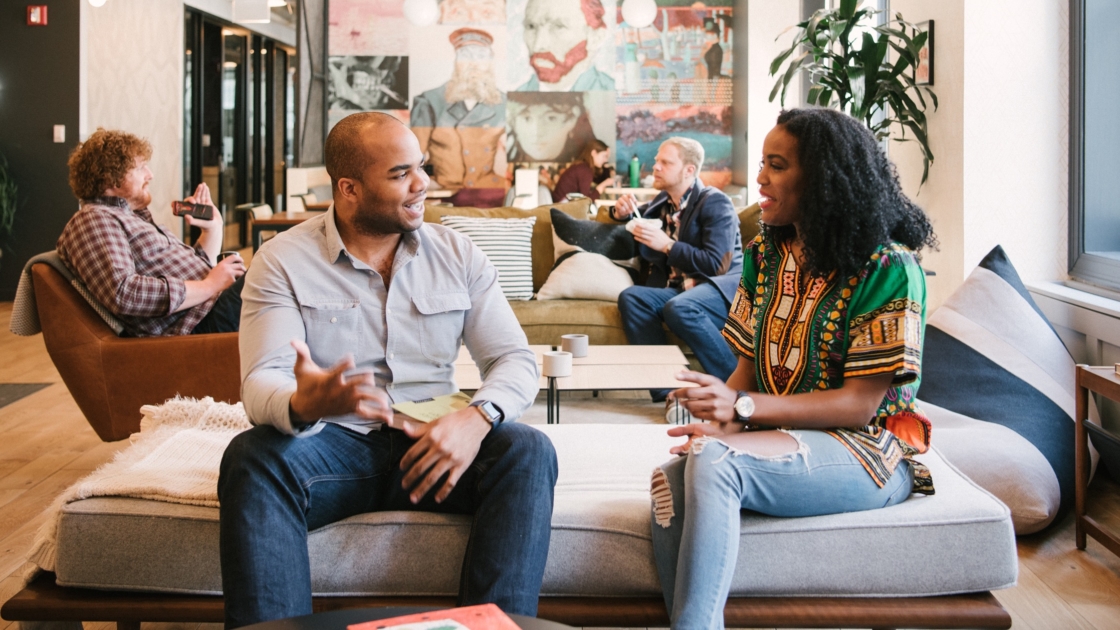Looking towards a post-pandemic world, the future of work looks bright but doesn’t resemble its former self. Instead, industries are seeing the possibilities that have opened up to them through a hybrid work model. The future of the workplace is being designed with the employee in mind, and with well-being at the forefront.
According to Jacob Morgan, author of The Future of Work, the main element driving the future of the workplace is the employee experience, “It comes down to three things: giving employees physical workspaces they want, having up-to-date technology (the tools they need), and a culture they can celebrate.”
Morgan notes in his book that workplace design greatly influences employee collaboration and productivity and that we need a dynamic work environment that can shape the employee experience.
“It’s about having some open, some closed, some café-like environments, some isolation—It’s about giving employees a choice,” he says.
Millennials are highly motivated by peers. They crave collaboration, work best in teams, and require frequent feedback, so they need a workplace environment and culture that will support that. WeWork offers workspaces designed with millennials in mind, with open collaborative spaces to foster connections and brainstorming, smart amenities, tech integration as well as private quiet spaces for concentration and deep thinking.
The future of the workplace—design the best place to work
So what are the key ingredients to the new look future of work? What attracts and retains the best talent? Companies should offer flexibility, and, with that, the appropriate tech tools to support the nature of their work.
Focus on flexibility
The future of work is not a one-size-fits-all approach. Employers need to plan with every employee in mind, using a mix of work model arrangements and spaces.
The future of work is hybrid by nature. This model combines remote working (such as working from home, in public spaces, co-working spaces) and in-office working, where employees have the freedom to choose where and when they work.
Famous companies that have embraced a hybrid work model include Apple, Microsoft, Shopify, Twitter, and LinkedIn. Spotify offers co-working spaces to their staff who still wish to work in an office environment but who don’t live close to an existing Spotify office location.
Working from WeWork’s various strategic locations across Hong Kong offers a company’s agile workforce the freedom and flexibility to perform at their best in state-of-the-art spaces designed to optimise innovation and productivity.
Focus on Tech
Tech has always transformed workplace dynamics. Laptops, smartphones, and convertible tablets ushered in a new era of mobility. This, in turn, has transformed workplace design and the future of workplaces. New tech continues to transform businesses of all types and sizes. Think of wearables, media streaming, wireless charging, cloud-based personal communication services, content sharing solutions, and productivity apps.
Workplaces of tomorrow need to be equipped with integrated technology, especially if they are accommodating a hybrid work model. They will need to use the right technology to accommodate hybrid meetings so everyone feels included and connected.
Build the best place to work
No organization can fulfill every hope and desire of its employees, but according to a Harvard Business Review study, there are six essential elements for creating an ideal work environment.
Firstly, it’s recommended that you build a workplace culture where individual differences are nurtured as opposed to pushing people to conform and a culture of transparency where information is not suppressed or spun. Companies also need to add value to their employees, rather than merely extracting from them.
Organizations need to stand for something meaningful that aligns with the values of their employees, and the work itself needs to be intrinsically rewarding to employees also. And last but not least, there are no stupid rules, which means that rules have a clear definition and purpose in order to be accepted and adhered to.
The future of work is changing for the better, with employee well-being at its center. Whether you offer a hybrid model, nurture employee talent and invest in their development, or offer flexible workspaces, your company is on its way to developing a healthier and happier workforce.
If you’d like to learn more about how we can creatively structure workspaces and locations to serve your business and staff, please visit wework.hk to connect with us today.
